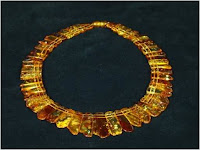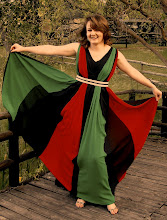ANCIENT EGYPT
(2500BC-330BC)
GEOGRAPHY
Egypt is located in the north-east corner of Africa. According to the ancient Egyptians, Egypt was divided in two section; the ‘Red Land’ and the ‘Black Land’. The ‘Red Land’, a barren desert, not only protected Egypt from invading armies; but also provided the ancient Egyptians with semi precious stones and metals. The ‘Black Land’ was the rich, fertile land across the banks of the river Nile. The Nile, the worlds longest river at 4000 miles long, was considered Egypt’s “life-line” . This was because the deposits of black silt during the annual floods assisted the growing of their crops.
EGYPTIAN TIME PERIODS
gyptian History has been broken down in to 3 main parts. The old kingdom, the middle kingdom and the new kingdom. The old kingdom (2700 BCE – 2200 BCE) also known as the pyramid age as this was the only time in history where pharaohs were buried in pyramids because of the grave robbers. The middle kingdom(2100BCE – 1800BCE) this was Egypt’s golden age, trade, arts, literature flourished and pharaohs were expected to be wise rulers and good kings. Pharaohs were buried in hidden tombs during this time so they would not be robbed of their wealth of jewels for the after life. The new kingdom (1500 BCE – 1000BCE) was Egypt's expansion period, expanding its boarders through military conquest.
TIME LINE
HIEROGLYPHS
Egyptians created this pictographic written language about 5000 years ago. It was continually used for more than 3500 years thereafter till about 400 AD. Initially these mysterious symbols carved on ancient monuments were thought to recorded magic spells and religious ceremonies. In 1799, the code was cracked by Napolean’s army.
PAPYRUS (EGYPTIAN PAER)
It is said that the ancient Egyptians were the first people to invent paper, they called it papyrus getting its name from the Cyperus Papyrus plant that grew in its masses along the Nile River. This reed like plant thrived along the muddy, wet banks so much so that many lived for millions of years. When making the papyrus the inner core on the plant was removed and cut into thin strips, then soaked of three days and pounded. This pliable fibre is then placed lengthways and crossways. It is pressed to squeeze out all the water. The sticky liquid from the fibres allows them to stick together. It is polished and flattened with a rock.
Papyrus revolutionised Ancient Egypt, stories we no longer being told and retold they were written down and documented thus capturing an important part of history.
ANCIENT EGYPTIAN RELIGION
Religion was a big part of ancient Egyptian civilization. There were as many as 2000 gods and goddesses, most of which were represented as half animal haft human. Although the bull, crocodile and cat were considered holy animals; the two chief gods were Amon-Ra (sun god and lord of the universe ) and Osiris (god of the underworlds). Believing that they could only reach their full potential after death, Egyptians spent significant amount of time preparing for the ‘next world. The rebirth after death was the driving force behind their elaborate funeral practises. Once the priest recited prayers and after a final attempt t to revive the deceased, the mummification process began. This process involved removing all the organs and packing the body with salt. It was then left for 40 days. Following this the body was packed with sawdust, linen, resin and salt and wrapped in bandages with jewellery placed between the layers. A portrait mask was placed over the head and the wrapped body or ‘mummy’ was placed in a beautifully decorated coffin with food, games, furniture and other items that may be useful in the next life. The whole mummification process took up to 70days , with the final ritual being the ‘Opening of the Mouth’. This was preformed by a priest and believed to magically give the deceased the ability to eat and speak again and have full use of their body in the afterlife.
SCARAB BEETLES
Scarab beetles were of great significance to the Ancient Egyptians. They represented the Sun God Ra. The beetles were also linked the creator god Atum because it seemed the Ancient Egyptians that the young beetles would just emerge from the ground leading to the belief that that they were created on the spot by Autum. They worshipped by the name Khepera which means “he who has come forth”. It was believed that a great god like scarab beetle pushed the setting sun across the sky.
Scarab jewellery was worn by almost all the ancient Egyptians no matter what social class they belonged to. A huge amount of importance was placed on this jewellery as it was believed that your energy with Ra was bound in your scarab pieces. Also scarab jewellery provided protective powers for the wearer and if someone else wore another's piece then these powers passed to them. To ensure confusion about pieces did not occur the owner's name was engraved on the flat back of the scarab piece. During the era of the New Kingdom scarab jewellery was placed on the heart of the dead as it was believed that these scarabs would be weighed against the feather of truth on the final judgement day.
FOOD
Due to the arid lands in ancient Egypt raising livestock was difficult therefore little pork or beef was found in ancient Egyptian recipes . Meat was considered a luxury enjoyed by the wealthy. However relying on the Nile river, fish formed the bulk of their diet. The wheat that was grown along the river Nile was fermented to make beer and sweetened with honey to make cakes and bread. The bread was very hard and gritty. Looking at Ancient recipes it was found that peas, beans, onions, garlic, leeks, lettuce, cabbage and turnips were staples in ancient Egyptian diets. Figs and dates thrived in the harsh Egyptian climate. Grapes were enjoyed as a fruit and wine for those who could afford it. Many foods were only enjoyed by the wealthy such as olives and coconuts . Poorer families survived on the vegetables grown in their gardens, wheat dishes and goose or duck.
EGYPTIAN FASHION AND JEWELLERY
Ancient Egyptian Fashion was primarily constructed for comfort as keeping cool in the dry hot dessert was essential. And the best fabric for this was Linen made from the flax plant. Ancient Egyptian clothing has not changed much at all through time. For women a typical straight caftan or shift has been worn throughout history , with the sleeves altering from short to long to best benefit the heat. And the length of the skirt may differ at different points in history or depending on the women’s social status. Their clothes came is various colours and adorned by precious gems and jewels. In such a hot climate there was not much use for shoes, those that could afford them wore leather sandals sometimes adorned by jewels and beads. Rings, bracelets and anklet were part of everyday fashion. Earrings were common among wealthy women . Poorer Egyptians would create jewellery from pottery which was and add glass or paint which was brightly coloured just to adorn themselves in something.
Jewelled sandals, caftans have placed themselves firmly in modern day fashion.
Egyptians clothing and its influence of jewellery:
Ancient Egyptians wore lighting clothing made of linen because of the warm climate all year round. Finer linen was worn by the wealthier families, some linen clothing was so fine that is was transparent. This was only worn by the wealthiest of women. No matter how fine the clothing though it was still plain and this was one of the biggest influences in Ancient Egyptian jewellery design and fashion as it was worn to add colour to otherwise plain clothes. Women in particular enjoyed wearing intricate pieces with semi-precious stones as the vibrant colours and designs stood out bold against the white of their clothing.
The usekh, a large collar that half hid the shoulders, and the pectoral, a large elaborate and heavy piece worn on the chest, were two pieces of jewellery that had fashion significance. The pectoral was worn to cover chest and breast when dress that exposed these areas was being worn. The usekh was worn in a similar way to cover exposed parts of the chest. Both these pieces had a practical use but was more of a wealth and fashion statement.
Along with their simple clothing and bold jewellery the Ancient Egyptians wore wigs. These wigs were made from strips of linen, human hair and wool which braided and held together with bees wax. A different wig would be worn each day and curly wigs would be made up for special occasions.
THE SIGNIFICANCE OF EGYPTIAN JEWELLERY
Jewellery had both a religious and social or political meaning instead of just being worn as decorative pieces. Some pieces had magical signs or represented a god to ward off evil forces. Certain pieces of jewellery were kept solely for wearing during religious ceremonies of festivals. Jewellery was also buried with the dead as it was believed that the deceased needed it in their afterlife. The import of being buried with the right jewellery was so great that the Ancients Egyptians spent most of their lives collecting jewellery to e buried with. Many tombs of Egyptian queens have been found with a mass of jewellery in them to be used in the afterlife.
Jewellery also indicated your social status in Ancient Egypt. Jewellery would bear the sign of your house or family, the more extravagant the piece the wealthier your house looked. Men would wear seal rings that was used as their signature when doing legal business. Wealthier men would wear gold rings with stones and intricate designs while men of a lower economic status would wear rings made of copper or silver with far simpler designs.
ANCIENT EGYPTS INFLUENCE ON OUR MODERN WORLD
Ancient Egypt had a huge influence on today’s western culture. You’d be surprised how many of their practices, fashions and cultural beliefs are part of our everyday lives.
Architecture: Many famous buildings such as The Forum of Rome, The Vatican and many buildings on Wall street have their roots in Egyptian architecture. Hatsepsut’s temple has influenced Greek temple design, which was later copied by Roman architects and then by European ones. They were first civilization to develop cement and gave us the pyramid or triangular structure- still to this day one of the strongest structures in architecture.
Paper: First civilization to create a type of paper.
Mining: Detailed plans of shafts and mines have been found on papyrus. The papyrus dates back to about 4000BC showing us they were one of the founding civilizations in mining.
Fashion: Any of you own a pair of sandals with beads on them? That is one of the fashions that orientated in Egypt and is still widely used today. They have also influenced dress design and the use of materials.
Women’s liberation: In Ancient Egypt the status of a women was very high. Ancient Egypt was one of the first civilizations to give women an almost equal standing as men in society.
BIBLIOGRAPHY
Encyclopedia Britannica Online
World book Encyclopedia
www.ancientegypt.co.uk
www.ancient-egypt.org
www.ancient-egypt-online.com
www.aldokkan.com
www.bbc.co.uk
www.earlham.edu
www.king-tut.org.uk
www.sptimes.com
www.watson.org




























